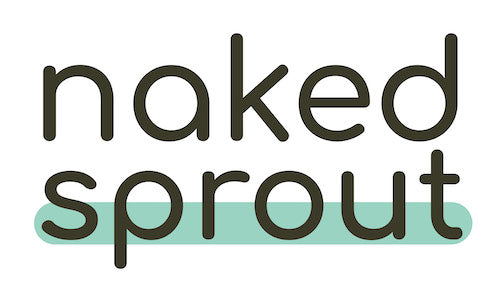Fossil fuels vs. biofuels - what's the difference?

The production of energy is a cornerstone of modern life, powering homes, industries, and transport across the globe.
But there are lots of different ways of making energy, and they are very different in their environmental impact. At Naked Sprout we’re particularly proud of the energy that’s used at our paper mill to produce our tissue products, and today we’re taking a long look at one part of the picture - biofuels.
How are biofuels different to fossil fuels, what are their environmental benefits, and how do we use them at Naked Sprout? Let’s plug in.

Fossil fuels vs biofuels.
First up, what are the basic properties of fossil fuels and biofuels?
Fossil fuels - coal, oil, and natural gas - come from the ancient remains of plants and animals. These organic materials were buried under layers of sediment and rock millions of years ago. Over this huge timeline the combination of heat and pressure transformed them into the energy-dense resources we use today.
Biofuels on the other hand, don’t take nearly as long to cook! They come from organic materials growing today, like plants and animal waste. Unlike fossil fuels, biofuels are considered renewable because their source materials can be regrown and harvested continuously.
Some examples are ethanol: produced through the fermentation of crops like corn and sugarcane, biodiesel: Created from vegetable oils, animal fats, or recycled cooking grease, and biogas: generated from the anaerobic digestion of organic waste materials, including manure, food scraps, and sewage.

Environmental benefits of fossil fuels
Carbon neutrality: One of the main environmental benefits of biofuels is how they can cancel out their own carbon. The carbon dioxide (CO2) emitted when plant-based biofuels are burned are roughly equivalent to the CO2 that has already been absorbed during their growth. This creates a balanced carbon cycle, unlike fossil fuels, which release carbon that has been sequestered underground for millions of years.
Reduced pollution: Biofuels generally produce fewer pollutants than fossil fuels. For instance, biodiesel made from cooking oil emits lower levels of particulates, carbon monoxide, and sulphur dioxide, than standard fuels.
Renewability: Biofuels are fuels that grow, coming from renewable resources that can be replenished. Crops for biofuels can be replanted and harvested annually, and the waste materials and by-products often used for biofuel production are always being made. This renewability contrasts sharply with fossil fuels, which are going to run out!
Using waste: And on the note of waste materials used for biofuel production, these include agricultural leftovers like corn husks, food waste, and animal manure. Using agricultural waste for energy production helps reduce the burden on landfills and promotes a circular economy.

Biofuel challenges
Despite their environmental advantages, biofuels face several challenges that mean it’s not always a straightforward switch from traditional fossil fuels.
Cost: Making and refining biofuels can be more expensive than extracting and refining fossil fuels, especially when we account for our current technologies and economies of scale. The fossil fuel industry also currently benefits from subsidies which can often make it difficult for biofuels to compete on price alone.
Food vs. fuel debate: The use of food crops like corn and sugarcane for biofuel production raises concerns about food security and the potential impact on food prices, particularly in developing countries. We all need fuel, but we all need to eat as well!
Land use: Biofuels grow, rather than deplete. This is one of their main strengths compared to fossil fuels, but it can also be a disadvantage, as growing anything requires space and resources. The use of biofuel crops like rapeseed, soybeans, and sugarcane can contribute to deforestation and the destruction of habitats, and land used for growing them might be better put to use with rewilding to create carbon sinks instead.
So when we advocate for biofuels we need to make sure we qualify exactly what kinds of fuels we’re talking about, how they’re made, and how we incorporate them into our processes.
Luckily, at Naked Sprout, we do exactly that.

How we use biofuels at Naked Sprout
At Naked Sprout, biofuels provide the energy we use to dry our tissue products. This is a huge part of energy use for standard paper manufacture, so we’re glad to be able to find a source of fuel that’s green and growing!
The fuels we use are sourced locally, from the farms and forests near our factory. Regular readers of the blog will know that Naked Sprout is manufactured in Girona, Spain, in the world’s highest rated B Corp tissue factory. This region benefits from an average of 2,330 hours of sunshine annually, which is ideal for our solar energy systems. But the frequent sunshine also increases the risk of forest fires. So local authorities regularly sweep the forest floors for dead bark, leaves, and twigs, and we feed these forest sweepings into our boiler!
We also source biomethane from local sheep farming. Farmers in the area have formed a collective to gather sheep droppings into a shared slurry tank. The methane produced from this slurry is converted into biomethane, which replaces natural gas at our factory.
Between the forests and the sheep, the biofuels we’ve incorporated into production benefit us, our customers, and the forests and farms of Girona. Both of these sources of fuel replenish naturally, and neither takes up land in its own right or has any possible use as food. So it’s a win-win-win!

Conclusion
Biofuels offer a more renewable, and often less CO2e intensive alternative to fossil fuels. While there are challenges to overcome, the potential benefits for our environment and communities are immense. We’re proud to be incorporating them into our production.
Together, we can make a change, one roll at a time!
Want to try tissue products that are partly powered by twigs and sheep gas?




